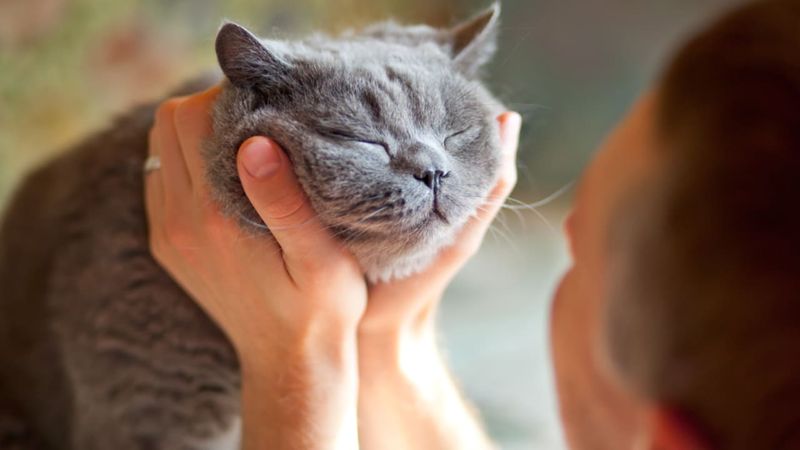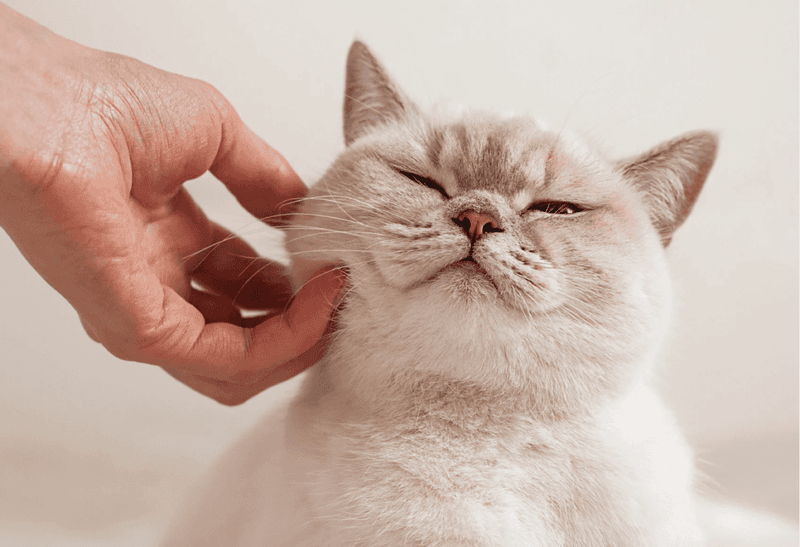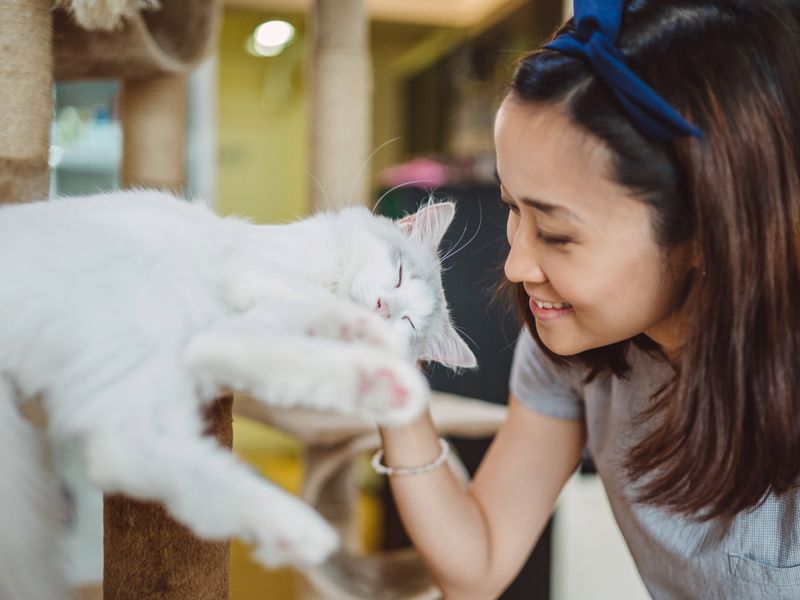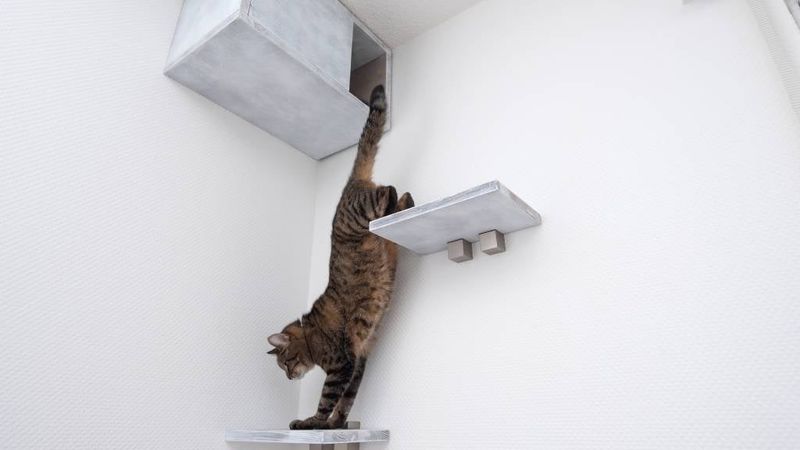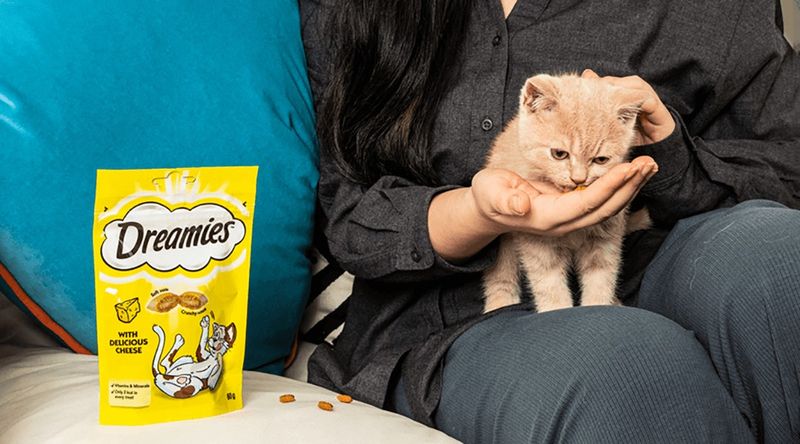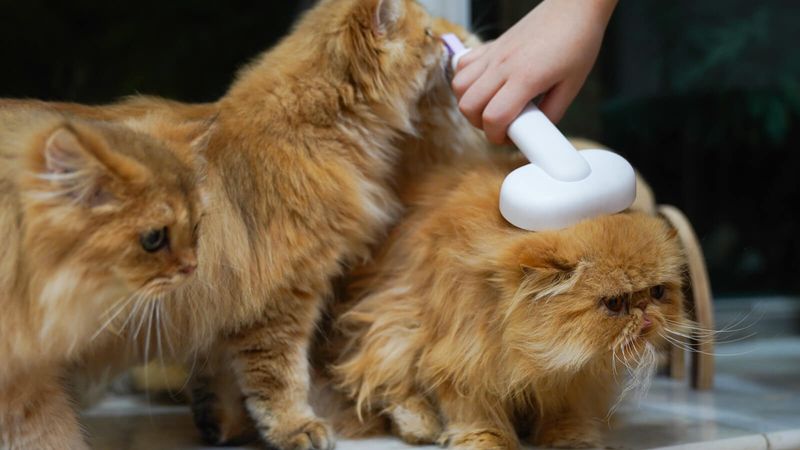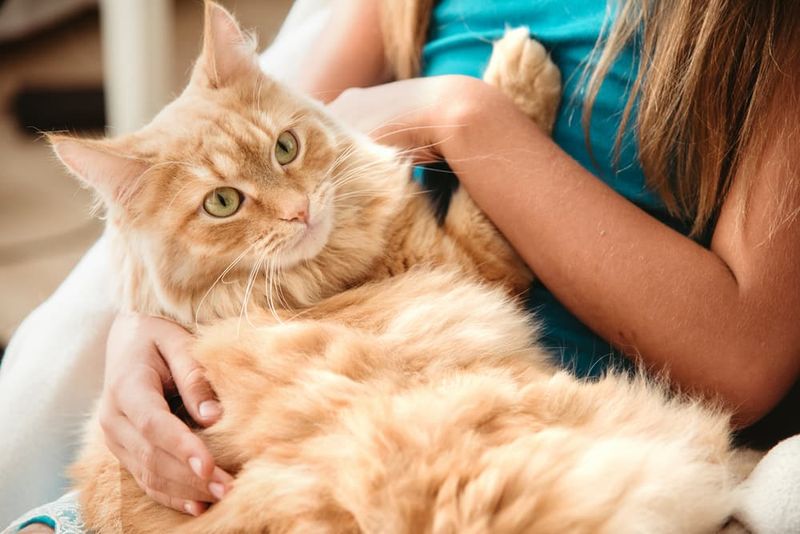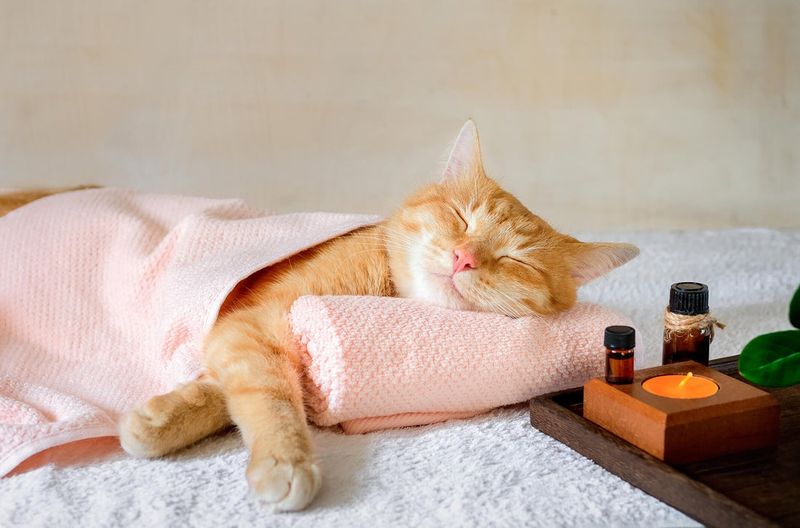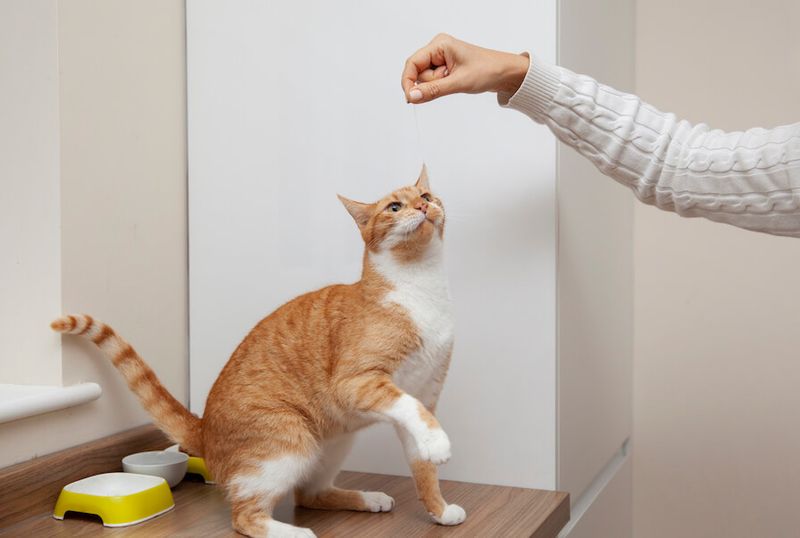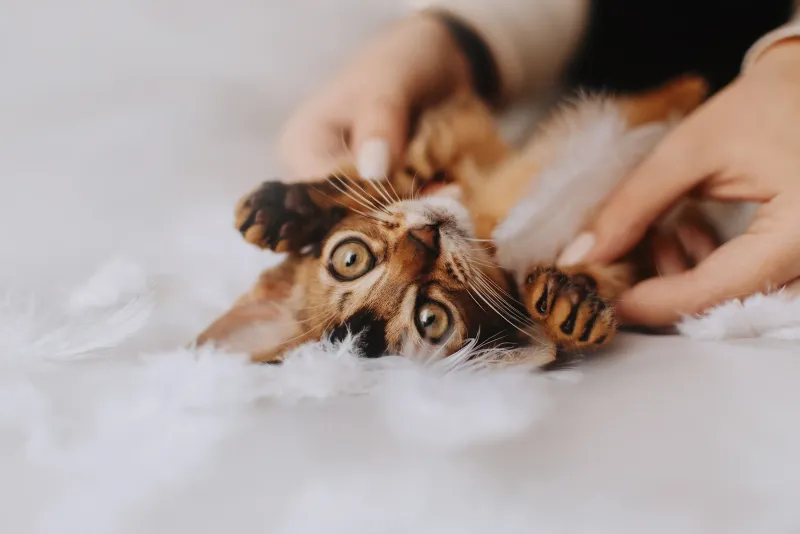📖 Table of Content:
- 1. Speak Their Language
- 2. Create A Consistent Feeding Schedule
- 3. Play Together Daily
- 4. Respect Their Personal Space
- 5. Master The Art Of Petting
- 6. Create Special Rituals
- 7. Provide Vertical Territory
- 8. Learn Their Favorite Treats
- 9. Groom Together Regularly
- 10. Create A Safe Outdoor Experience
- 11. Understand Their Unique Personality
- 12. Create A Stress-Free Environment
- 13. Use Positive Reinforcement
- 14. Offer Slow Blinks And Gentle Touch
- 15. Provide Enrichment Activities
- 16. Practice Patience And Consistency
Cats are mysterious creatures that can seem aloof at times, but they’re capable of forming deep bonds with their human companions. Building a strong connection with your feline friend takes patience, understanding, and consistent effort. When you strengthen your bond with your cat, you’ll enjoy a more rewarding relationship, and your cat will feel secure and loved in your home.
1. Speak Their Language
Cats communicate through body language, so learning to read their signals helps you understand their needs. Watch for slow blinks, which are kitty kisses that show trust and affection. Try blinking slowly at your cat and see if they return the gesture.
Pay attention to tail positions and ear movements too. A vertical tail means they’re happy to see you, while flattened ears signal fear or anger. Responding appropriately to these cues shows your cat you respect their feelings.
Many cats also respond to soft, high-pitched voices that mimic their own vocalizations. Talk to your cat regularly in gentle tones to build familiarity and trust.
2. Create A Consistent Feeding Schedule
Reliability builds trust in the feline world. When you feed your cat at the same time each day, you become a dependable provider in their eyes. This predictability creates security and strengthens your position as their caretaker.
Hand-feeding treats occasionally can also create positive associations with your presence. Your cat will connect your arrival with good things happening, which deepens your bond.
Consider making mealtimes interactive by staying nearby while they eat or using puzzle feeders that you fill together. This transforms a basic necessity into quality time that you both share.
3. Play Together Daily
Regular play sessions tap into your cat’s natural hunting instincts while creating fun shared experiences. Dedicate at least 15 minutes twice daily to interactive toys like feather wands or laser pointers that require your participation. This active engagement shows your cat you’re worth spending time with.
Rotating toys keeps the experience fresh and exciting for your feline friend. Notice which games make your cat most animated and incorporate those frequently.
End play sessions with a treat or gentle pets to create a reward system. This routine helps your cat associate you with both excitement and comfort, building a multi-faceted relationship.
4. Respect Their Personal Space
Independence is a core trait in feline behavior. Respecting a cat’s need for personal space—especially when they retreat to designated safe zones—demonstrates boundary awareness. This approach is essential to nurturing trust and a positive human-cat relationship.
Create multiple cozy hideaways throughout your home where your cat can observe household activities without participating. Window perches, cat trees, and quiet shelves make perfect retreat spots.
Let your cat initiate contact on their terms. When they approach you for attention, respond positively but gently. This balanced approach helps your cat feel both safe and valued in your relationship.
5. Master The Art Of Petting
The cheeks, chin, and base of the ears are often sweet spots for feline affection. Positive reactions like purring or gentle leaning indicate you’re hitting the right areas.
Keep petting sessions brief at first, gradually extending them as your cat grows more comfortable. This prevents overstimulation and builds positive associations with your touch.
Learn to recognize when your cat has had enough – twitching tails, flattened ears, or skin rippling are common signs. Respecting these signals shows your cat you’re attentive to their comfort levels.
6. Create Special Rituals
Shared rituals—like a cuddle during your morning coffee or a quiet brushing session before bed—can become cherished parts of your daily routine. These consistent moments help deepen your connection over time.
The beauty of rituals lies in their predictability and mutual enjoyment. Your cat will begin to anticipate these special moments and may even remind you when it’s time.
Choose activities that naturally fit into your schedule so they become sustainable habits. Even brief but consistent interactions like a greeting chirp when you enter a room can become significant bonding moments that strengthen your relationship over time.
7. Provide Vertical Territory
Cats naturally seek height for security and observation. Installing cat shelves, trees, or window perches throughout your home acknowledges this instinct and shows your understanding of their needs. Your cat will appreciate having safe vantage points to survey their domain.
Position these vertical spaces near where you spend time, creating opportunities for proximity without pressure. This arrangement allows your cat to be near you on their terms.
Celebrate when your cat uses these spaces by offering gentle praise or treats. This positive reinforcement connects the pleasure of elevated resting spots with your approval, strengthening your bond through environmental enrichment.
8. Learn Their Favorite Treats
Food motivation varies widely among cats, but discovering your feline’s preferred treats creates powerful positive associations. Experiment with different flavors and textures – some cats go wild for freeze-dried chicken while others prefer soft, fishy morsels.
Once you’ve identified their favorites, use these special treats sparingly and strategically. Offer them during potentially stressful situations like nail trims or after positive interactions to reinforce good experiences.
Consider keeping small treat containers in different rooms so you’re always prepared when bonding opportunities arise. This readiness shows your cat you’re consistently thinking about their happiness.
9. Groom Together Regularly
Mutual grooming is a natural bonding behavior among cats in the wild. Brushing your cat mimics this social activity while helping maintain their coat health. Start with short sessions using a brush your cat responds well to, focusing on areas they can’t easily reach themselves.
Gentle strokes and praise create a soothing atmosphere during grooming time. Many cats eventually look forward to these sessions as special attention from their favorite human.
For cats that resist brushing, try grooming gloves that feel more like petting. The key is making the experience pleasant rather than stressful, gradually building positive associations with your touch and care.
10. Create A Safe Outdoor Experience
Supervised outdoor adventures can enrich your cat’s life while positioning you as their guide and protector. Harness training opens up a world of sensory experiences that indoor-only cats often miss. Start slow with short indoor harness sessions before venturing outside.
Catio spaces offer another way to share outdoor time safely. Sitting together in a secure outdoor enclosure allows your cat to experience nature’s sights and sounds while feeling protected by your presence.
These shared adventures create unique bonding opportunities as you experience new environments together. Your cat will associate you with these exciting explorations, deepening their trust in your guidance.
11. Understand Their Unique Personality
Just like people, cats have distinct personalities that influence how they give and receive affection. Some cats are social butterflies who follow you everywhere, while others show love through quiet proximity. Observing your cat’s natural tendencies helps you connect on their terms.
Adjust your expectations to match your cat’s temperament rather than trying to change them. A shy cat might prefer gentle talking and minimal handling, while an outgoing cat might enjoy rowdy play sessions.
Celebrate what makes your cat unique instead of comparing them to other pets. This acceptance forms the foundation of a relationship based on genuine understanding and respect.
12. Create A Stress-Free Environment
Security starts with the space they live in. By spreading out resources like litter boxes, water bowls, and resting areas, you reduce stress and encourage peaceful coexistence, especially when more than one cat is in the mix.
Maintain consistent routines for feeding, play, and sleep to give your cat predictability. Cats thrive when they can anticipate what happens next in their day.
Buffer loud noises and sudden changes when possible, introducing new elements gradually. Your role as protector and provider of stability builds trust that translates into a stronger bond as your cat learns to rely on you for security.
13. Use Positive Reinforcement
Celebrating good behavior with treats and praise builds motivation and confidence. Clicker training makes it easy to communicate what you want, starting with small goals like having them touch a target with their nose.
Always reward desired behaviors immediately with treats, praise, or play – whichever motivates your particular cat. This consistency builds trust in your reactions.
Never punish mistakes or use fear-based training methods. Positive approaches preserve trust while negative ones damage your bond. The process of learning together through positive reinforcement creates mutual understanding that strengthens your connection.
14. Offer Slow Blinks And Gentle Touch
Soft physical connection builds trust over time. The slow blink – closing your eyes deliberately while facing your cat – is a powerful signal of trust in feline language. When your cat returns this gesture, they’re expressing comfort and affection toward you.
Gentle head bumps mimic how cats greet trusted friends in their social groups. If your cat initiates this contact, responding with a light touch to their forehead acknowledges their greeting.
Physical connection should always happen on your cat’s terms. Watching for invitations to touch – like rolling over or approaching with a raised tail – ensures interactions remain positive and strengthen rather than strain your relationship.
15. Provide Enrichment Activities
Mental stimulation keeps your cat engaged and prevents boredom-related behavior problems. Puzzle feeders transform mealtime into a stimulating activity that satisfies hunting instincts. Watching your cat solve these puzzles creates shared enjoyment as you appreciate their intelligence.
Rotating toys maintains novelty and excitement. Simple cardboard boxes, paper bags, or homemade toys can be just as effective as store-bought options when introduced with enthusiasm.
Window perches with bird feeders nearby provide hours of natural entertainment. Joining your cat in watching outdoor activities creates a shared focus that builds connection through mutual interest in the world outside your home.
16. Practice Patience And Consistency
Building trust takes time, especially with cats who have experienced trauma or changes in their living situation. Consistent, gentle interactions show your cat they can count on you to respect their boundaries and meet their needs.
Respond predictably to your cat’s communication attempts. When they meow for attention or food, acknowledge them even if you can’t immediately fulfill their request.
Celebrate small progress rather than expecting immediate affection. A formerly shy cat who now sleeps in your room (even if not on your bed) is showing significant trust. Recognizing these incremental changes helps you appreciate the developing bond between you.

